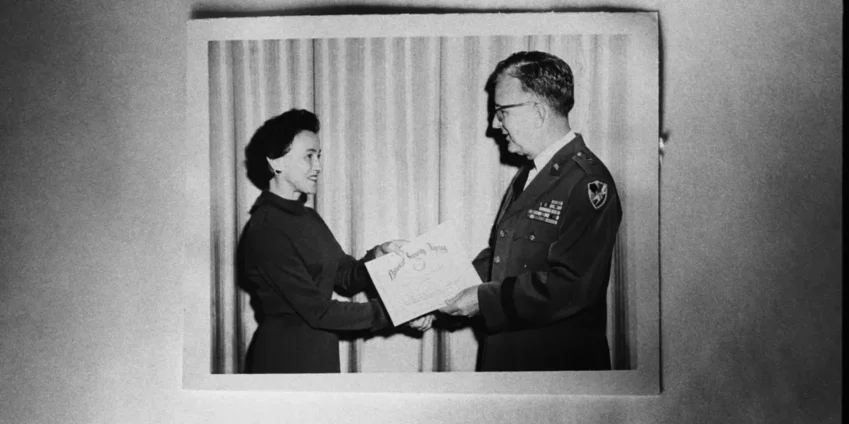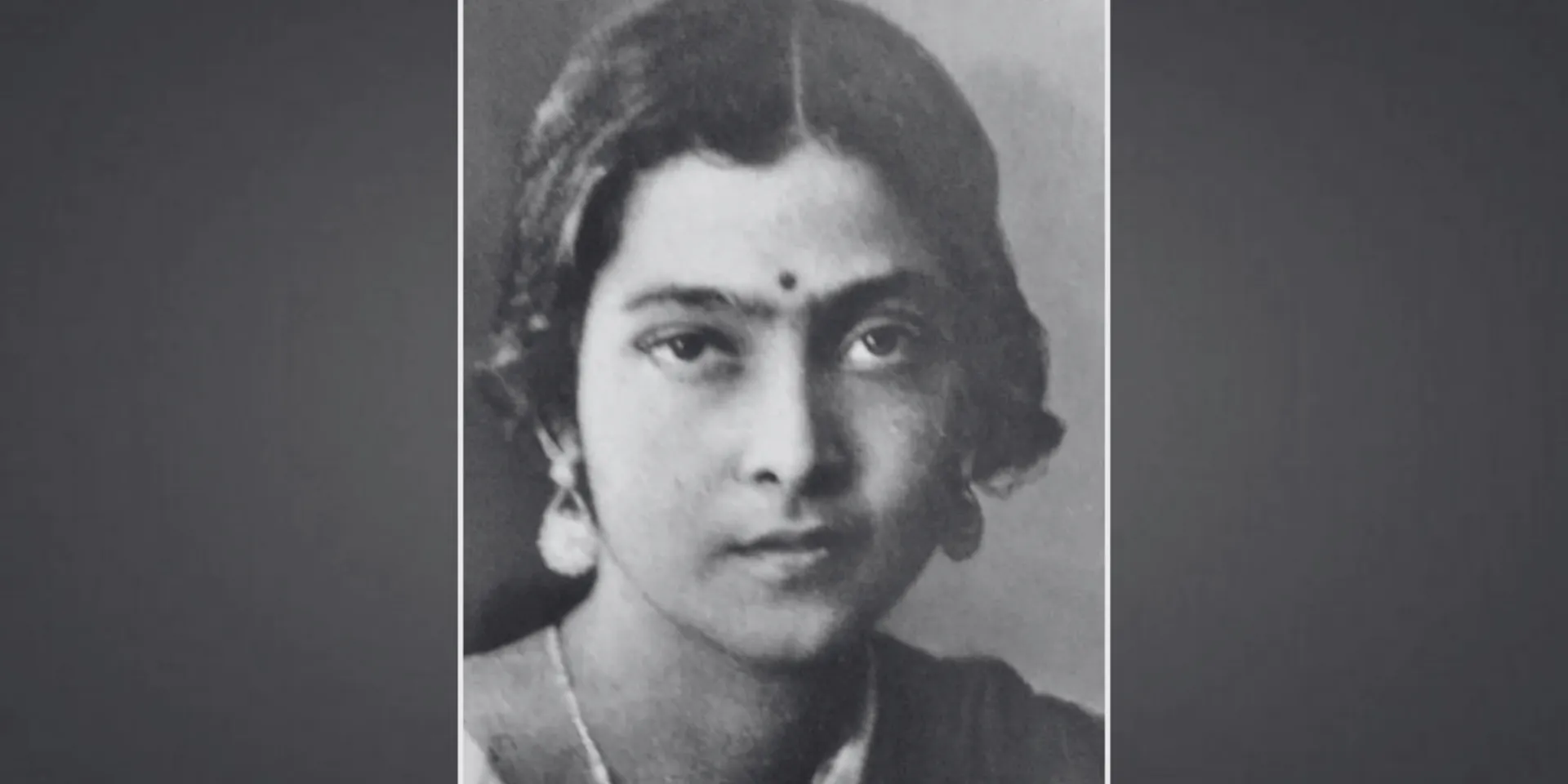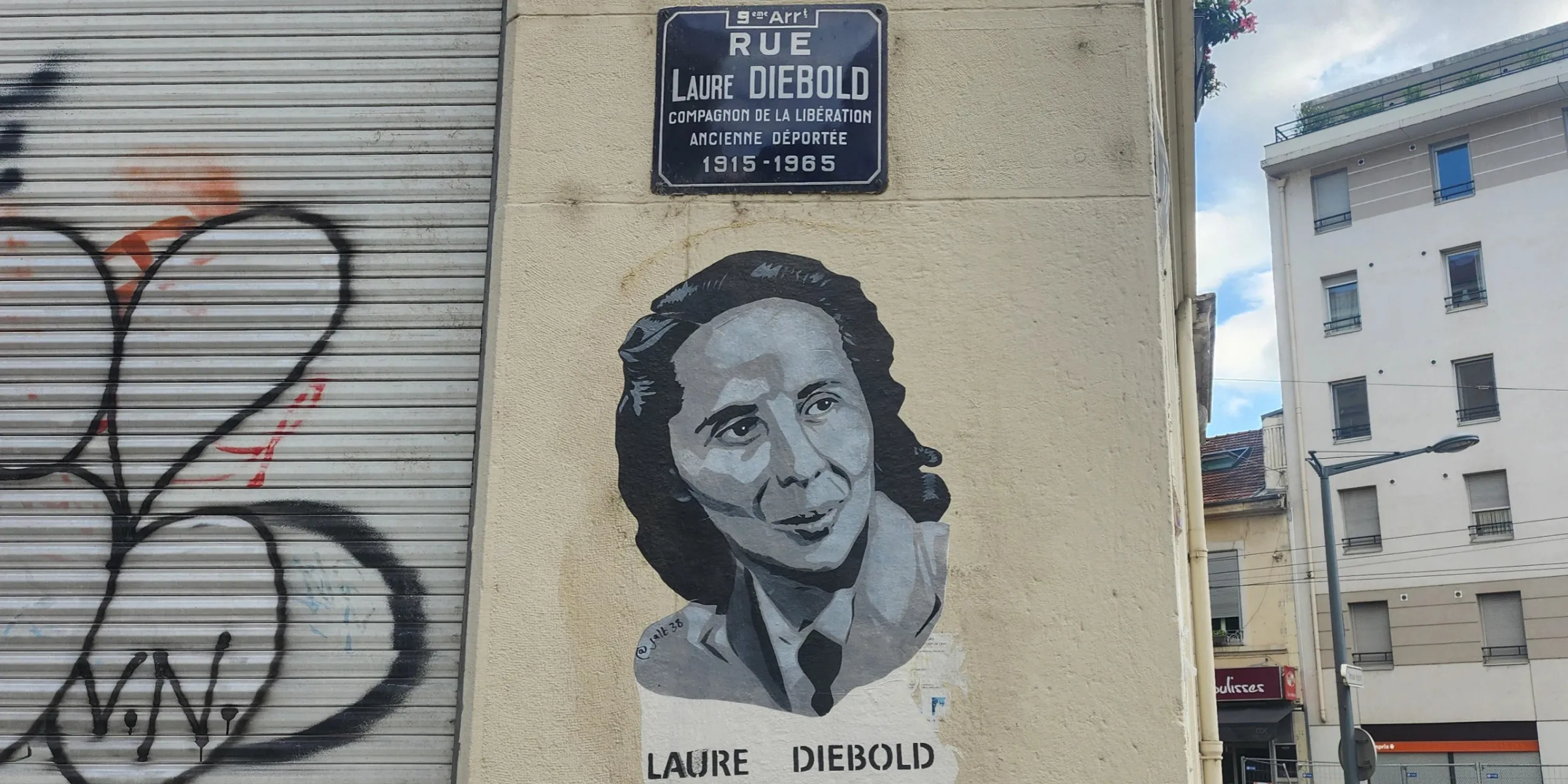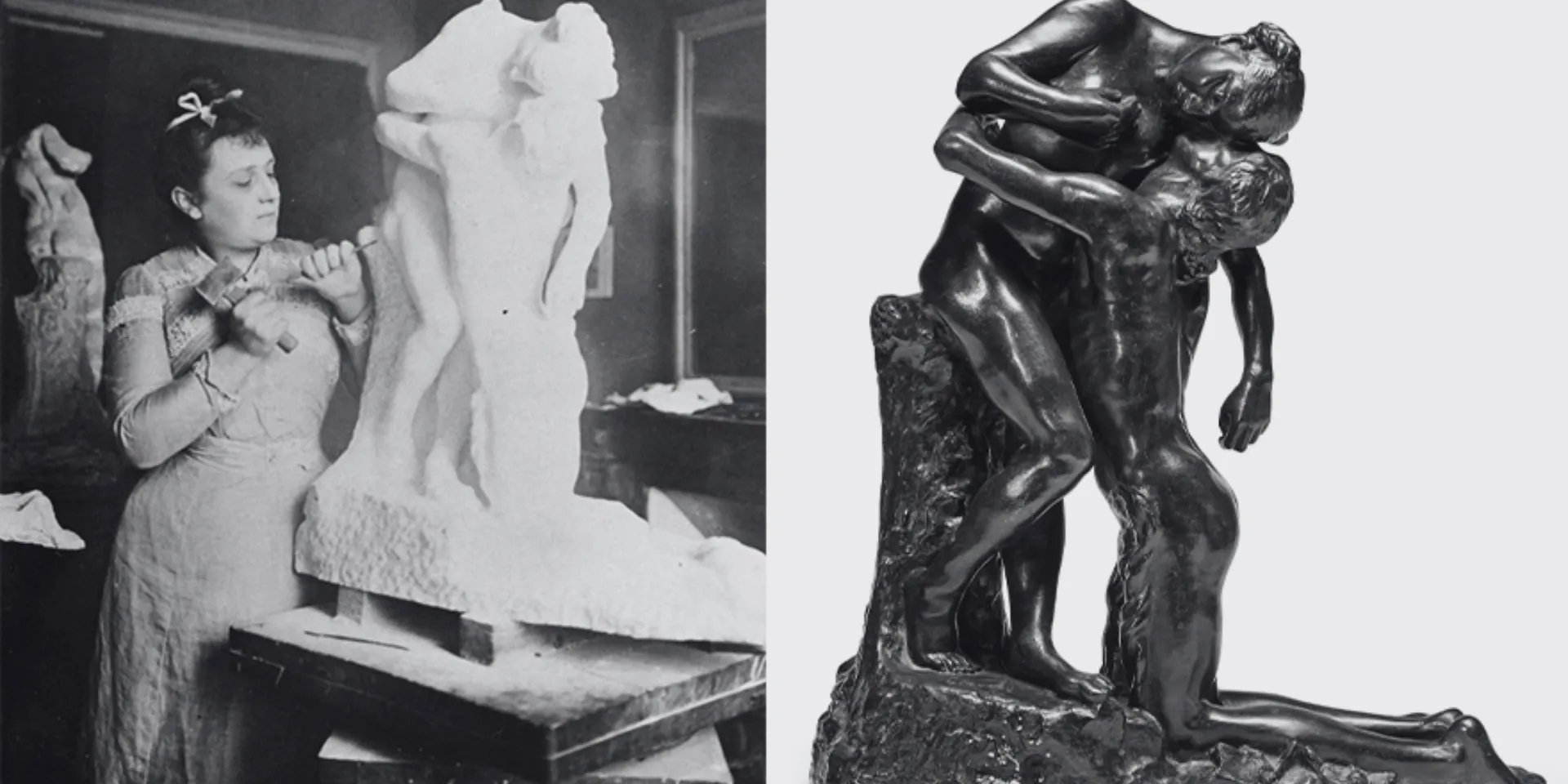Contents
ToggleNumbers made sense to Angeline Nanni in ways that words never could. While other girls her age worried about dresses and dates, twelve-year-old Angie kept perfect books for her father’s grocery store in rural Pennsylvania. She understood profit margins before she understood poetry. She could spot accounting errors that grown men missed. These skills would eventually help catch some of America’s most dangerous traitors.
But in 1945, sitting in a cramped classroom in Arlington, Virginia, Angie had no idea that her talent with numbers would change the course of the Cold War. She just wanted to keep her government job instead of going back to run a beauty shop with her sisters.
The test in front of her looked impossible. Rows of five-digit numbers that made no logical sense. Instructions about “non-carrying” subtraction that sounded like made-up math. Around her, college-educated women stared at their papers with obvious confusion. Angie had never heard of non-carrying arithmetic, but something clicked in her brain. She raced through the problems while everyone else struggled.
That moment launched her into America’s most secret code-breaking operation. For the next 35 years, Angie Nanni would help identify Soviet spies operating in the United States. Her work directly contributed to catching Julius and Ethel Rosenberg, Klaus Fuchs, and dozens of other agents who passed American secrets to Moscow. She became part of the most successful counterespionage operation in U.S. history.
That Tough, Savvy Girl from that one Beauty Parlor
Angeline Nanni was born into an Italian-American family in rural Pennsylvania during the Great Depression. Her father owned a small grocery store that barely kept the family afloat. Money was always tight, and every penny had to be accounted for. While other children played, Angie learned to maintain precise financial records.
The Depression taught the Nanni family that survival required practical skills over everything else. Angie’s parents valued education, but they valued usefulness more. If you could do something that people needed, you could always find work. If you were just smart without practical application, you might starve.
This mindset shaped Angie’s entire approach to life. She didn’t dream about romance or fame. She focused on becoming indispensable through competence. While her sisters Mimi and Virginia learned hairstyling at beauty school, Angie studied the business side. She understood that someone had to handle the money, manage the books, and deal with suppliers.
By age twenty, Angie was running the family beauty parlor in Blairsville. She scheduled appointments, ordered supplies, paid taxes, and handled customer complaints. The business succeeded because Angie treated it like a serious operation rather than a hobby. She proved that women could manage complex enterprises if they were left to it.
When World War II started, the Nanni sisters moved to Washington D.C. to support the war effort. Thousands of young women were flooding into the capital to fill jobs left empty by men who had gone to fight. For the first time in American history, women had access to government positions that required real skills and offered decent pay.
Finding Her Place in Secret Work
The war’s end in 1945 created a crisis for women who had built new lives in Washington. Most government agencies were cutting staff and giving preference to returning veterans. Thousands of women faced the choice between returning to traditional female jobs or fighting to keep positions they had earned through competence.
Angie refused to accept that the war’s end meant the end of her independence. She had proven herself capable of more than running a beauty shop. When she heard about opportunities in government intelligence work, she applied immediately. The fact that she lacked a college degree didn’t deter her. She knew she could handle any job that required attention to detail and mathematical precision.
The test that changed her life was designed to identify people with unusual analytical abilities. The government needed workers who could spot patterns in seemingly random data and perform complex calculations without making errors. Most importantly, they needed people who could handle the psychological pressure of working with classified information for years without breaking down or revealing secrets.
The “non-carrying” arithmetic that confused other test-takers made perfect sense to Angie once she understood the basic principle. In regular subtraction, when the bottom number is larger than the top number, you borrow from the next column. In non-carrying subtraction, you simply add ten to the top number without borrowing. This created mathematical relationships that could reveal patterns in coded messages.
Angie’s instant understanding of this concept revealed a mind that could grasp abstract mathematical relationships without formal training. The supervisors realized they had found someone with natural cryptanalytic ability. Within days, she was assigned to the most secret project in American intelligence: breaking Soviet codes.
Entering the Hidden War
The Venona project began because American intelligence officials suspected that Soviet allies were actually gathering secrets to use against the United States after the war. By 1945, intercepted Soviet communications had accumulated in file cabinets for years. Nobody knew how to read them, but military intelligence leaders believed they contained evidence of extensive espionage operations.
Soviet codes were considered unbreakable because they used “one-time pads” – sheets of random numbers that were supposed to be used only once. Without repetition, there should be no patterns for code breakers to exploit. The mathematics of code breaking required multiple messages using the same key material to reveal the underlying structure.
But the Soviets had made a crucial mistake. During the chaos of the German invasion in 1941, Soviet code clerks had duplicated some pages of their one-time pads. Messages encrypted with the same pad material could be compared to reveal patterns. The challenge was finding which messages among thousands used the same key material.
This was where Angie’s mathematical intuition became crucial. She was assigned to match messages that might have used duplicate key material. This required examining thousands of coded messages looking for subtle mathematical relationships that might indicate shared encryption. Most people would have found this work impossibly tedious and frustrating.
Angie approached the matching work like solving puzzles. Each message was a mathematical problem with a solution waiting to be discovered. She developed systematic methods for comparing messages and identifying potential matches. When she found a match, the entire unit would shift into high gear to exploit the breakthrough.
The work required absolute concentration and mathematical precision. A single error in calculation could invalidate weeks of analysis. Angie’s background managing financial records had taught her to double-check every calculation and maintain perfect accuracy even under pressure. These skills proved essential for the painstaking work of mathematical cryptanalysis.
Breaking the Unbreakable
The breakthrough that made Venona possible came from the combination of mathematical analysis and linguistic insights. While Angie and other women identified messages that used duplicate key material, linguists like Meredith Gardner figured out what the decoded messages actually said. This collaboration between mathematical and linguistic analysis created one of the greatest intelligence successes in American history.
The first major success came in 1946 when Gardner decoded a message that identified several Manhattan Project scientists who were passing atomic secrets to Soviet intelligence. The message contained cover names for prominent physicists and described meetings between Soviet agents and American sources. This was the first concrete proof that Soviet espionage had penetrated America’s most secret weapons program.
Angie’s role in this breakthrough was crucial but invisible. She had identified the matched messages that made Gardner’s linguistic analysis possible. Without her mathematical work, the messages would have remained incomprehensible jumbles of numbers. Her ability to spot patterns in thousands of coded messages provided the foundation for all subsequent Venona successes.
The decoded messages revealed the scope of Soviet espionage operations in shocking detail. Cover names appeared for State Department officials, Treasury Department employees, military officers, and scientists. The Soviets had systematically recruited Americans who had access to classified information and were ideologically sympathetic to communism.
As more messages were decoded, Angie and her colleagues began to understand that they were uncovering one of the largest espionage operations in history. The Soviets had been recruiting American agents since the 1930s and had successfully penetrated virtually every important government agency. The scope of the operation was far beyond what anyone had imagined.
The Pressure of Life-and-Death Secrets
Working on Venona meant living with secrets that could change the course of history. Angie and her colleagues knew the identities of Soviet agents years before the FBI could take action. They understood which Americans were betraying their country while those same people continued working in sensitive government positions.
The psychological pressure was enormous. The women couldn’t discuss their work with anyone outside the project. They couldn’t tell their families what they did for a living. They couldn’t even talk to each other about work once they left the office. The isolation was complete and permanent.
Most of the Venona women remained unmarried, partly because the secrecy requirements made normal relationships impossible. How could you build a life with someone when you couldn’t explain what you did every day? How could you trust potential romantic partners when you knew how extensively Soviet intelligence had penetrated American society?
Angie developed a complete separation between her work life and personal life as a survival mechanism. The moment she walked out of Arlington Hall, she forced herself to forget about codes and spies and Soviet agents. She focused on shopping, cooking, socializing with her female colleagues, and maintaining relationships with her extended family. This mental discipline allowed her to function normally despite the enormous stress of her work.
The secrecy was so complete that most people at Arlington Hall didn’t know what the Venona team was doing. The Soviet unit was physically separated from other code-breaking operations and surrounded by additional security measures. Even within the intelligence community, knowledge of Venona was restricted to a tiny group of officials with absolute need-to-know.
HerWiki is built and maintained by the support of amazing readers like you. If this story inspired you, join the cause and help us make HerWiki bigger and better.
Catching Famous Spies
The most famous Venona success was identifying Julius and Ethel Rosenberg as Soviet agents. Decoded messages showed that Julius Rosenberg, code-named first “Antenna” and later “Liberal,” had provided atomic secrets to Soviet intelligence. Additional messages implicated his wife Ethel in the espionage operation.
Angie’s mathematical analysis had helped decode the very messages that would send the Rosenbergs to the electric chair. The weight of this responsibility was enormous, but she understood that catching traitors was essential for national security. The Rosenbergs had provided information that helped the Soviet Union develop nuclear weapons years earlier than they otherwise could have.
The decoded messages also identified Klaus Fuchs, a German-born physicist who had worked on the Manhattan Project and passed detailed atomic secrets to Moscow. Fuchs’ information had been crucial to Soviet nuclear weapons development. His identification led to his arrest and conviction in Britain, severely damaging Soviet intelligence operations.
Other major spies identified through Venona included Alger Hiss, a State Department official who had influenced American foreign policy while secretly working for Soviet intelligence. The decoded messages provided confirmation of accusations that had been difficult to prove through other means.
Each identification represented thousands of hours of mathematical analysis by Angie and her colleagues. They would work on a single message for months, gradually extracting names and operational details through painstaking calculation. The work required absolute precision because errors could lead to false accusations against innocent people.
Defending Against Enemy Penetration
One of the most dramatic moments in Venona’s history occurred when Angie identified William Weisband, a colleague who worked as a “linguistic adviser” in their own unit, as a Soviet spy. Weisband had been positioned to observe American code-breaking efforts and report progress to Moscow.
Angie noticed that Weisband would look over her shoulder while she worked and ask suspicious questions about her methods. Her instincts told her that his interest went beyond normal curiosity. She began covering her work whenever he approached and refusing to answer his questions about specific techniques.
When Weisband was finally identified as a Soviet agent and removed from the project, Angie’s suspicions were validated. The incident demonstrated how thoroughly Soviet intelligence had penetrated American operations. Even the most secret code-breaking projects were vulnerable to infiltration.
The discovery of Weisband’s betrayal led to additional security measures that made the Venona unit even more isolated. Trust became even more important among the remaining team members. They understood that their lives and the success of their mission depended on maintaining absolute secrecy and watching for signs of further penetration.
The Weisband case also revealed how crucial the human element was in protecting classified operations. No amount of physical security could prevent betrayal by trusted insiders. The only defense was the vigilance and good judgment of people like Angie who could recognize suspicious behavior and act on their suspicions.
Life in the Shadows
The Venona women created their own social world within the constraints of their secret work. They bowled together, played bridge, went shopping, and took vacations as a group. These friendships provided emotional support that was impossible to find elsewhere because only they understood the unique pressures of their work.
Angie developed particularly close relationships with Gene Grabeel, Carrie Berry, and other long-term members of the team. These women became surrogate family members who shared experiences that couldn’t be explained to biological relatives. They supported each other through the psychological challenges of living with dangerous secrets.
The group also served as a professional support network. When Angie encountered difficult mathematical problems, she could consult with colleagues who understood both the technical challenges and the security implications. This collaboration was essential for maintaining the quality of their analytical work over decades.
Social activities with the group provided necessary relief from the intensity of their work. They would go to movies, visit museums, take weekend trips, and enjoy normal leisure activities that helped them maintain psychological balance. These relationships were crucial for preventing the mental breakdowns that affected some people who worked in highly classified programs.
The women also shared the experience of watching American society change around them while being unable to discuss their own contributions to national security. They knew they were helping to protect the country from serious threats, but they couldn’t receive public recognition for their service. Their satisfaction had to come from the work itself and the respect of their immediate colleagues.
The Mathematics of Espionage
Angie’s daily work involved mathematical challenges that would have stumped most professional mathematicians. She had to identify patterns in seemingly random numbers, calculate relationships between different coded messages, and maintain perfect accuracy while working with thousands of data points.
The mathematical foundation of cryptanalysis required understanding probability theory, pattern recognition, and complex arithmetic operations. Angie learned these concepts through practical application rather than formal education. Her natural mathematical intuition allowed her to grasp sophisticated concepts that had been developed by professional cryptographers over decades.
The work also required developing new mathematical techniques for analyzing Soviet encryption methods. The Venona team had to invent approaches for dealing with problems that had never been encountered before. Angie contributed to these innovations through her practical insights about numerical relationships.
Managing the vast amount of data generated by Venona required systematic organizational methods that Angie helped develop. Every calculation had to be documented, every hypothesis had to be tested, and every conclusion had to be verified through independent analysis. The mathematical rigor was as important as the results because errors could have catastrophic consequences.
The intellectual challenge of the work was enormous but also rewarding. Angie was solving problems that the world’s leading mathematicians and linguists considered nearly impossible. The satisfaction of breaking a particularly difficult code or identifying a crucial pattern provided motivation that sustained her through decades of painstaking work.
Technological Changes and Adaptation
As the Cold War progressed, the methods used for code breaking began to change dramatically. The introduction of computer technology in the 1960s and 1970s created new possibilities for analyzing coded messages but also threatened to make the specialized skills of the Venona women obsolete.
Angie adapted to these changes by learning to work with early computer systems while maintaining her expertise in manual analysis techniques. The transition was challenging because computers required different approaches to problem-solving than the intuitive methods she had developed over decades.
The mathematical principles underlying code breaking remained the same, but the tools for applying those principles changed rapidly. Angie had to learn new programming concepts, data processing methods, and analytical techniques while continuing to work on active cases. The learning curve was steep for someone who had built her career on manual calculation methods.
Despite the technological changes, human judgment remained crucial for interpreting results and making connections between different pieces of information. Computers could process vast amounts of data quickly, but they couldn’t replicate the pattern recognition abilities that Angie had developed through years of experience.
The introduction of computers also changed the social dynamics of the workplace. The intimate teamwork that had characterized the early Venona years gave way to more specialized roles and less personal interaction. Angie missed the collaborative atmosphere that had made the work rewarding despite its challenges.
The End of an Era
By the late 1970s, the Venona project was winding down. Most of the messages that could be decoded had been analyzed, and the intelligence value of the remaining material was limited. The NSA decided to phase out the program and reassign personnel to more current intelligence challenges.
Angie faced the choice between learning entirely new intelligence techniques or retiring from government service. At age 57, she had spent more than three decades working on the same project. The prospect of starting over with different methods and different colleagues was daunting.
In 1980, Angie and her colleague Mildred Hayes were given the responsibility of boxing up the Venona files and storing them for historical preservation. The irony was profound: they were literally putting away the work that had defined their adult lives. The files they packed contained evidence of some of the most important counterespionage successes in American history.
The end of Venona marked the conclusion of an era in intelligence work when small teams of dedicated individuals could make dramatic contributions through manual analysis and mathematical insight. The future belonged to computer-based systems that could process information faster but required different kinds of expertise.
For Angie, retirement meant leaving behind not just a job but an identity that had shaped every aspect of her life for 35 years. She had been part of something larger than herself, contributing to national security in ways that few people ever could. The transition to civilian life was emotionally difficult even though she was ready to stop working.
The Underestimated Impact of Nanni’s Service
The declassification of Venona in 1995 finally allowed the public to understand the scope and importance of the project. Historians and intelligence professionals recognized that the work done by Angie and her colleagues represented one of the greatest achievements in the history of American cryptanalysis.
However, public recognition focused primarily on male figures like Meredith Gardner and FBI agent Robert Lamphere. The crucial contributions of the women who did the mathematical groundwork remained largely invisible. This pattern reflected broader tendencies to overlook women’s contributions to technical and scientific achievements.
Angie’s family members were shocked to discover the true nature of her work when they read about Venona in news reports. For decades, they had known only that she worked for the government in some kind of administrative capacity. The revelation that their quiet aunt had helped catch famous spies was almost impossible to believe.
The impact of Venona extended far beyond the specific spies who were identified. The project provided American intelligence agencies with detailed understanding of Soviet intelligence methods, organizational structure, and recruitment techniques. This knowledge shaped American counterintelligence efforts throughout the Cold War.
Angie’s mathematical innovations contributed to the development of modern cryptanalytic techniques that are still used today. Her methods for identifying patterns in large datasets and matching related information influenced the development of computer-based intelligence analysis systems.
Personal Costs of Public Service
The personal sacrifices required for Venona to work were enormous and permanent. Angie never married or had children, partly because the demands of maintaining security clearances made normal relationships extremely difficult. The isolation required by her work continued even after retirement.
The psychological impact of living with secrets for decades was profound. Angie developed habits of caution and discretion that shaped every aspect of her life. She remained suspicious of new acquaintances and careful about revealing even the tiniest bit of personal information even in casual conversations.
The financial rewards for Venona were modest compared to the importance of the achievements. Government salaries for women in the 1940s and 1950s were criminally low, and there were no special compensation programs for women working on highly classified projects risking their lives day in and day out. Angie’s motivation came from patriotic duty and civic responsibility rather than financial incentives.
The lack of public recognition was particularly difficult for someone who had contributed so significantly to national security. While male colleagues received awards after awards, the women’s contributions remained classified and unacknowledged. This invisibility was a source of frustration that lasted throughout their careers.
Despite these costs, Angie not once expressed regret about her choices. She understood that her work had helped protect the country from serious threats and that the sacrifices were necessary for the success of the mission. Her sense of duty and professional pride sustained her through the difficulties.
Nanni’s Legacy
Angie Nanni’s story clearly demonstrates how individual women’s talents and determination contributed to historical events in ways that have remained hidden for decades because the petty men they were surrounded by couldn’t afford for their stories to get out because that poses the most substantial threats to the patriarchal society we live in. Her mathematical abilities and analytical persistence helped protect American national security during the most dangerous period of the Cold War and yet most people, even career historians, have never heard of her.
Her success also challenges assumptions about the relationship between formal education and practical expertise. Despite lacking a college degree, Angie mastered mathematical techniques that stumped professionally trained cryptographers. Her natural abilities and disciplined application proved astronomically more valuable than the intelligence gurus who graduated from Ivy Leagues and held very strong positions in the intelligence network of the USA.
The collaborative relationships among the Venona women created a model for how women could support each other in demanding professional environments.
Angie’s story also illustrates the hidden contributions that women have made to fields traditionally dominated by men. Her mathematical innovations and analytical insights were crucial for one of the most important intelligence operations in American history, even though her contributions received little recognition.
The declassification of Venona has finally allowed historians to understand the true scope of women’s contributions to American intelligence operations. Angie Nanni’s story represents thousands of women whose technical skills and dedication protected national security while remaining invisible to the public. Their legacy reminds us that history’s most important achievements often come from unexpected sources and remain hidden until security constraints allow their recognition.
At age 99, when Angie finally spoke publicly about her work, she provided insights into one of the most successful counterintelligence operations in history. The numbers that came so easily to a young girl in Depression-era Pennsylvania had ultimately helped shape the outcome of the Cold War.
Angeline Nanni quietly died at the age of 101 on August 27, 2019.







